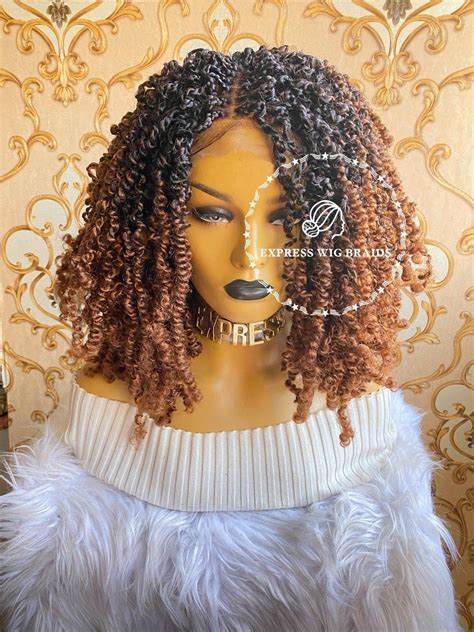Introduction
African American wigs have become indispensable accessories in the world of beauty and fashion. With their versatility, functionality, and empowering nature, they offer countless opportunities to express oneself and enhance one’s appearance. This comprehensive guide delves into the remarkable world of African American wigs, exploring their types, materials, styling techniques, and the profound impact they have on individuals and society.

Understanding the Market: African American Wigs in the Numbers
- \$2.5 billion: The estimated market value of the African American wig industry.
- 30 million: The approximate number of African Americans in the United States who wear wigs.
- 70%: The percentage of African American women who consider wigs a vital part of their beauty routine.
Types of African American Wigs: Embracing Diversity
African American wigs come in various types, each catering to specific preferences and hair textures:
1. Lace Front Wigs (LFWs)
- Feature a sheer lace front that mimics the hairline and scalp, offering a natural-looking finish.
- Allow for versatile styling options, including high ponytails and buns.
2. Full Lace Wigs (FLWs)
- Crafted from delicate lace, providing a complete and seamless covering for the head.
- Offer unparalleled versatility, enabling the wearer to style their hair in any way without revealing the wig cap.
3. Synthetic Wigs
- Made from artificial fibers, known for their affordability and longevity.
- Heat-resistant styles available, allowing for heat styling techniques.
4. Human Hair Wigs
- Sourced from 100% human hair, providing a luxurious and realistic appearance.
- Can be colored, permed, and styled as desired.
Materials and Quality: A Quest for Excellence
The quality of an African American wig is determined by its materials and construction:
1. Lace Materials
- Swiss lace: Known for its transparency, breathability, and durability.
- French lace: Thinner and more delicate than Swiss lace, offering a virtually invisible appearance.
2. Hair Types
- Remy hair: Collected from a single donor and remains aligned in the same direction, ensuring minimal tangling and shedding.
- Non-Remy hair: Collected from multiple donors and may have varied hair cuticles, resulting in potential tangling.
3. Cap Construction
- Mono-part wigs: Feature a single layer of lace or mesh that extends from the crown to the nape, providing natural-looking volume.
- Machine-made wigs: Constructed using a machine that weaves the hair onto a mesh or lace cap, often more affordable but less breathable.
Styling African American Wigs: A Symphony of Creativity
Styling African American wigs empowers individuals to express their unique personality and achieve a wide range of looks:
1. Natural Textures
- Enhance the wig’s natural texture with curl-defining creams and mousses.
- Avoid excessive brushing to maintain definition and prevent breakage.
2. Sleek and Straight
- Use a flat iron to achieve a sleek, straight style.
- Apply a heat protectant spray before heat styling to prevent damage.
3. Voluminous Curls
- Use curling rods or a wand to create voluminous curls.
- Apply a texturizing spray to enhance definition and hold.
4. Protective Styling
- Utilize cornrows, braids, or Bantu knots to protect the wig from damage and maintain healthy hair growth.
The Empowering Impact: African American Wigs as a Source of Confidence
Beyond their aesthetic appeal, African American wigs hold profound social and psychological significance:
- Expression of Identity: Wigs allow individuals to explore different hairstyles and express their unique cultural heritage.
- Increased Confidence: The ability to change their hair effortlessly empowers wearers with increased self-confidence and a sense of control over their appearance.
- Embracing Authenticity: Wigs provide a platform for African Americans to embrace their natural hair texture and challenge societal beauty standards.
Tips and Tricks: A Journey of Hair Care Expertise
1. Proper Care and Maintenance
- Wash wigs regularly with sulfate-free shampoo and conditioner.
- Use a wide-tooth comb or detangling brush to remove knots and tangles.
- Allow wigs to air dry naturally to prevent heat damage.
2. Styling Versatility
- Experiment with heat styling techniques to achieve various looks and textures.
- Use hair accessories such as headbands, scarves, and clips to enhance styles.
- Consider custom-coloring or perming wigs for personalized effects.
Common Mistakes to Avoid: A Path to Wig Wisdom
1. Neglecting Maintenance
- Failing to wash and condition wigs regularly can lead to product buildup, tangling, and ultimately damage.
2. Over-Styling
- Excessive heat styling, chemical treatments, or brushing can weaken the hair fibers and shorten the wig’s lifespan.
3. Improper Storage
- Storing wigs without proper protection can result in dust accumulation, tangles, and loss of shape.
FAQs: Unraveling Wig-related Mysteries
1. What are the differences between synthetic and human hair wigs?
- Synthetic wigs are generally more affordable and durable, while human hair wigs provide a more natural and authentic look.
2. How often should I wash my wig?
- The frequency of washing depends on usage. However, experts recommend washing synthetic wigs every 6-8 wears and human hair wigs every 2-3 weeks.
3. Can I color or perm my wig?
- Human hair wigs can be colored or permed, while synthetic wigs cannot.
4. How do I prevent tangling and shedding?
- Use a detangling brush or wide-tooth comb to gently remove knots and tangles.
- Apply detangling products or hair serum to reduce friction and minimize shedding.
5. What is the best way to store my wig?
- Store wigs on a mannequin head or a foldable stand to preserve their shape.
- Use a satin or silk cap or bag to protect the wig from dust and moisture.
Conclusion
African American wigs have revolutionized the beauty industry, providing endless opportunities for self-expression, empowerment, and style versatility. Understanding the different types, materials, and styling techniques allows wearers to make informed choices and create their desired looks. By embracing proper care and maintenance, avoiding common mistakes, and exploring the empowering impact of African American wigs, individuals can enhance their confidence, celebrate their cultural heritage, and achieve their hair goals.
